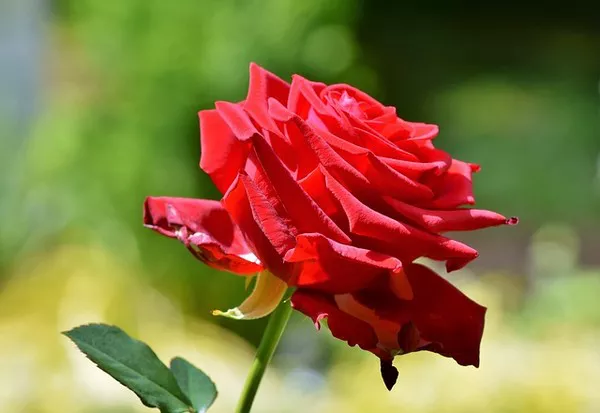Throughout history, flowers have held a special place in the human heart, often serving as messengers of love, affection, and deep emotions. Among the vast array of blooms that grace our world, certain flowers have become enduring symbols of love. Whether it’s an expression of romantic love, platonic affection, or familial bonds, these flowers have transcended cultures and generations to convey the profound and complex emotion of love. In this article, we will delve into the rich tapestry of symbolism surrounding flowers and explore what makes some of them such powerful emissaries of love.
Flowers as Symbols
Flowers have long been associated with human emotions and have been used to convey feelings and sentiments when words fall short. The practice of using flowers as symbols of various emotions, including love, dates back thousands of years to ancient civilizations such as the Greeks, Romans, and Egyptians. These societies believed that different flowers held unique meanings and could communicate a wide range of emotions without the need for verbal communication.
In the context of love, flowers have served as powerful symbols, with each bloom carrying its own nuanced message. Over time, these meanings have been refined and passed down through generations, creating a universal language of love that transcends cultural and language barriers.
The Rose: A Timeless Symbol of Love
When one thinks of a flower symbolizing love, the rose immediately comes to mind. The rose’s association with love and passion dates back to ancient times and can be traced through various cultures and mythologies. The rose, with its exquisite beauty and enchanting fragrance, has captivated hearts for centuries, making it the undisputed queen of love symbols.
The red rose, in particular, is a symbol of passionate love and desire. Its vibrant red hue is said to represent the intensity of love’s flame, and it has been used to express deep affection and romantic longing. The practice of gifting red roses as tokens of love can be traced back to Greek and Roman mythology, where the rose was associated with the goddess of love, Aphrodite (Venus in Roman mythology).
In addition to red roses, other colored roses carry their own meanings in the language of flowers. For example, pink roses symbolize admiration and gratitude, while white roses convey purity and innocence. Yellow roses, on the other hand, represent friendship and joy.
The Rose in Different Cultures
The rose’s symbolism extends beyond Western cultures. In Islamic culture, the rose is often associated with spiritual love and represents the beauty of the soul. In Chinese culture, the rose is a symbol of love, and different colors carry unique meanings. Red roses signify love and passion, while pink roses convey happiness and joy.
In Indian culture, the lotus is often considered a symbol of divine beauty and purity, which can also be associated with love. The Lotus flower’s unfolding petals are thought to represent the expansion of the soul and the growth of one’s love. In Japan, cherry blossoms symbolize the fleeting nature of life and love, reminding us to cherish every moment.
The Lily: A Symbol of Refined Beauty
While the rose may be the most renowned symbol of love, the lily holds its own special place in the world of flowers. The lily, with its elegant and pure appearance, is often associated with refined beauty and the virtues of devotion and commitment.
The white lily, in particular, has strong ties to love and is often used in weddings to symbolize purity and the unblemished nature of love. This connection between the lily and love can be traced back to ancient Greek mythology, where the lily was believed to have sprung from the milk of Hera, the queen of the gods and goddess of marriage. In Christian symbolism, the lily is associated with the Virgin Mary and represents her purity and divine motherhood.
The lily’s significance in love is not limited to Western culture. In Chinese culture, the lily is associated with the idea of a happy union and a harmonious marriage. In Japan, the lily is often used as a symbol of renewal and rebirth, making it a meaningful choice for expressing love and new beginnings.
Other Flowers That Symbolize Love
While roses and lilies are perhaps the most iconic symbols of love, many other flowers also hold special meanings in the realm of love and relationships. Here are a few notable examples:
Tulip: Tulips, especially red ones, symbolize true love and are often associated with perfect and deep love.
Carnation: Carnations, particularly in shades of pink, represent a mother’s love and are commonly given on Mother’s Day.
Orchid: Orchids symbolize love, beauty, and strength, making them a unique and exotic choice for expressing love.
Daisy: Daisies convey innocence and purity, making them a sweet choice for expressing young or innocent love.
Forget-Me-Not: These tiny blue flowers carry the message of true love and remembrance, making them a meaningful choice for lovers who are separated.
Peony: Peonies symbolize a happy marriage and are often associated with love and romance.
Conclusion
In the world of flowers, love has found its most eloquent and enduring symbols. Whether it’s the passionate red rose, the pure white lily, or the delicate forget-me-not, flowers have a unique ability to convey the complex and profound emotion of love. These floral symbols of love have transcended time and culture, allowing us to express our deepest feelings without uttering a single word. So, the next time you find yourself wanting to convey love and affection, consider the rich language of flowers and let these timeless symbols speak for you.


